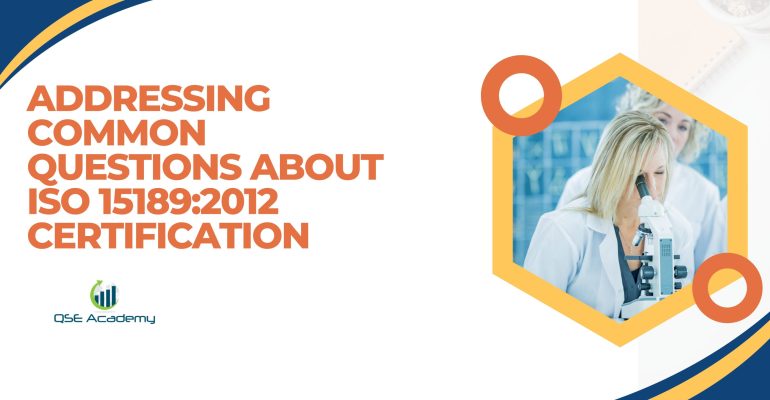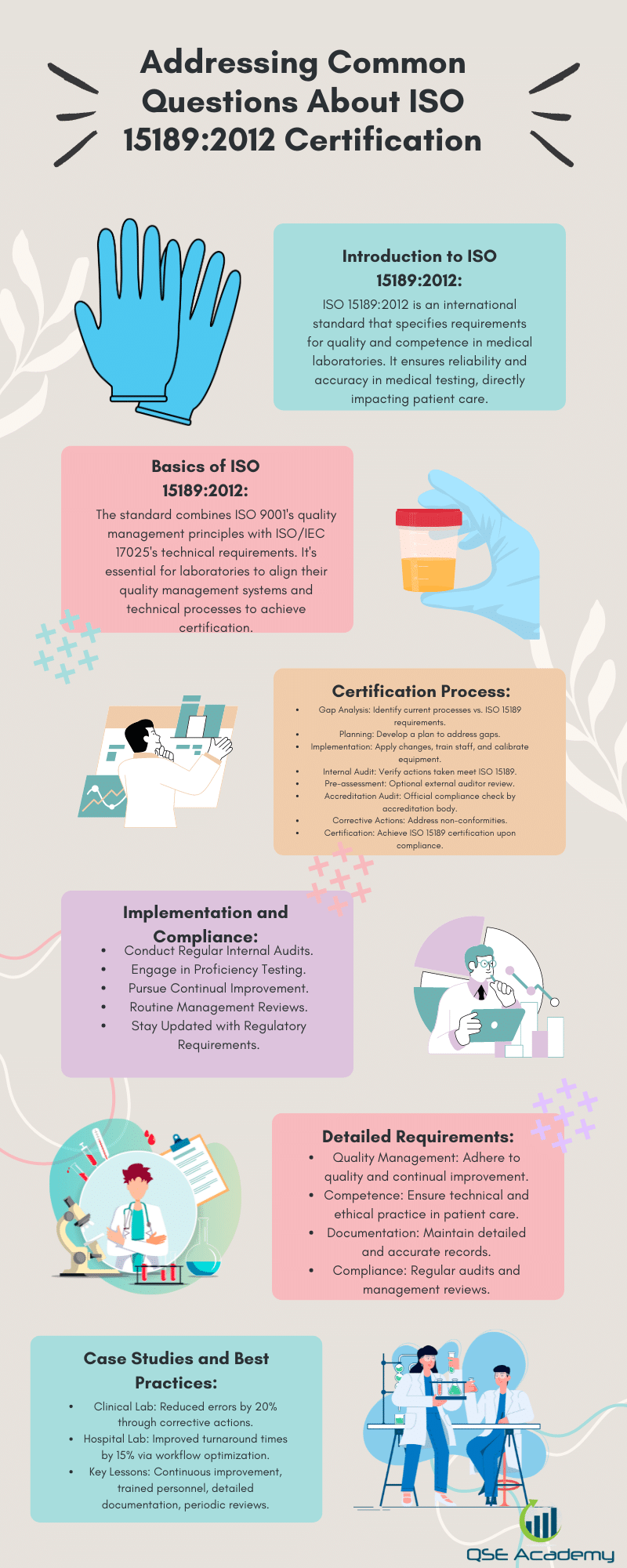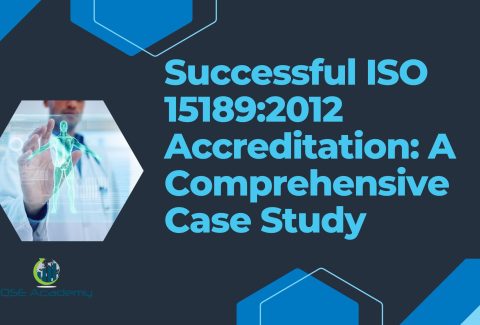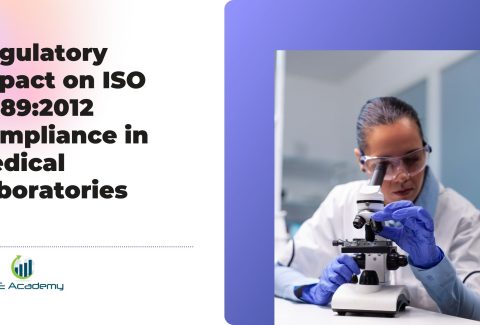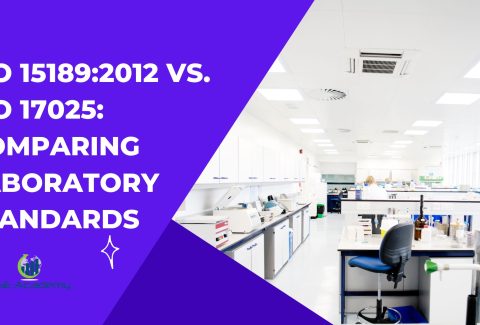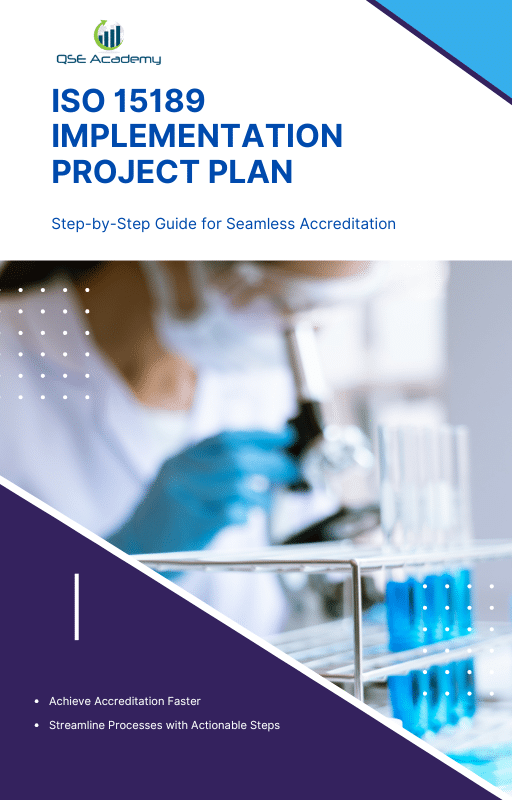Addressing Common Questions About ISO 15189:2012 Certification
Navigating the landscape of international standards can seem like a journey through an intricate labyrinth. ISO 15189:2012, specifically, sets critical benchmarks for medical laboratories globally. The intricacies of gaining certification under this standard can often lead to a multitude of questions. This article is poised to demystify the core aspects of ISO 15189:2012, outlining the certification process and key implementation strategies, with the aim of turning confusion into clarity.
Introduktion
ISO 15189:2012 is an international standard that specifies requirements for quality and competence in medical laboratories. Developed to support the complex processes involved in medical testing, the standard is critical for laboratories aiming to ensure the reliability and accuracy of their results, which directly impact patient care.
ISO 15189:2012 is vital for laboratories as it combines the quality management system principles of ISO 9001 with the technical requirements of ISO/IEC 17025, specific to medical testing environments. The certification assures patients, healthcare providers, and regulatory bodies that a laboratory meets both the organizational quality standards and technical expertise necessary for medical testing.
The journey of ISO 15189 began in the early 2000s, emerging from the need to harmonize laboratory practices globally. Since its inception, it has seen updates to encompass evolving best practices and technological advancements in laboratory medicine.
|
Requirement |
Beskrivning |
|---|---|
|
Kvalitet |
Adherence to quality management systems and continuous improvement strategies. |
|
Competence |
Technical competence and ethical practice for handling patient samples and reporting. |
Medical laboratories that achieve ISO 15189:2012 certification have demonstrated their commitment to providing quality services, maintaining laboratory equipment, and ensuring the competence of their testing — all of which are critical for excellent patient care.
Basics of ISO 15189:2012
What is ISO 15189:2012?
ISO 15189:2012 is an international standard that specifies requirements for quality and competence in medical laboratories. It is designed to promote the use of reliable laboratory services that are essential for high-quality patient care.
Explanation of ISO 15189:2012
The standard encompasses a comprehensive quality management system, addressing factors such as laboratory equipment calibration, specimen handling, and ethical practice. It aligns with the general principles of ISO 9001 and is harmonized with ISO/IEC 17025, which applies to calibration and testing laboratories.
Scope and Purpose of the Standard
The scope of ISO 15189:2012 is centered on enhancing the quality services provided by medical laboratories through a continuous improvement approach. Its purpose is to establish criteria that ensure the competence of testing, the effectiveness of operational processes, and the reliability of laboratory results. This is fundamental in achieving accurate medical testing and diagnostics, thereby supporting better patient care outcomes.
Certifieringsprocess
Achieving ISO 15189:2012 certification requires clinical and medical laboratories to undergo a methodical process to demonstrate conformity to the standard. This process typically consists of several steps aimed at ensuring quality services and technical competence in medical testing. Below is an overview of the certification process:
- Gap Analysis: Laboratories conduct an internal review to identify any differences between their current processes and the requirements of ISO 15189.
- Planering: Development of a project plan to address the gaps and align the laboratory’s quality management systems with the standard’s requirements.
- Genomförande: Laboratories apply changes in their processes, including updating procedures, training staff, and ensuring laboratory equipment is calibrated in accordance with the regulatory requirements.
- Internrevision: After implementing changes, an internal audit is conducted to verify that the actions taken have effectively met the criteria of ISO 15189:2012.
- Pre-assessment: An optional step where an external auditor evaluates the readiness of the laboratory for the official accreditation process.
- Accreditation Audit: Performed by an accreditation body, the audit assesses the laboratory’s compliance by reviewing documentation, practices, and competency of staff.
- Korrigerande åtgärders: If non-conformities are identified, the laboratory must take corrective actions before the final approval is given.
- Certifiering: When compliance is confirmed, the laboratory receives ISO 15189:2012 certification, signaling their dedication to continuous improvement in patient care and quality management.
Implementering och efterlevnad
Implementing ISO 15189:2012 in a medical laboratory is centered around establishing, managing, and maintaining a Quality Management System (QMS) that meets the international standards for quality and competence. To remain compliant with ISO 15189:2012, laboratories must:
- Conduct Regular Internal Audits:
- Evaluate processes against the standard’s requirements.
- Identify areas for improvement.
- Engage in Proficiency Testing:
- Demonstrate technical competence in conducting tests.
- Validate the accuracy and reliability of results.
- Pursue Fortsatt förbättring:
- Implement corrective and preventive actions as necessary.
- Update policies and protocols to adapt to evolving technologies and practices.
- Routine Management Reviews:
- Ensure that quality objectives are met.
- Foster leadership commitment to the QMS.
- Stay Updated with Regulatory Requirements:
- Align laboratory practices with changes in laws and regulations.
- Ensure that patient care is not compromised due to non-compliance.
Maintaining certification requires laboratories to not only uphold the standards initially met for accreditation but also to demonstrate the continuous application of the QMS through Ethical practice, staff training, and commitment to providing quality services. Accreditation bodies perform periodic surveillance audits to verify ongoing compliance with the standard. This cycle of evaluation, coupled with a laboratory’s dedication to Continual Improvement, guarantees consistent delivery of accurate medical testing and supports the overarching goal of enhancing patient care.
Detaljerade krav
ISO 15189:2012 certification includes comprehensive requirements that ensure medical laboratories meet high standards for quality and competence. Legal and contractual matters necessitate that laboratories adhere to regulatory requirements and ethical practices relevant to their activities. This includes maintaining impartiality and strict confidentiality regarding patient information and test results.
Structurally, a conforming laboratory must have a well-defined organizational structure with clear management responsibilities. The personnel should have designated roles and be responsible for their respective tasks, contributing to the effectiveness of the quality management systems.
In terms of resources, ISO 15189:2012 emphasizes the competence of laboratory staff. Suitable education, training, and continuous professional development are essential. Additionally, the facilities and infrastructure must support the accurate and reliable performance of medical testing.
Processes are also scrutinized, from pre-examination to post-examination stages. Medical laboratories are expected to have documented procedures that ensure the quality of patient care. This includes the proper collection, handling, and analysis of patient samples and secure and accurate record-keeping practices.
Finally, the standard requires a robust management system that is reviewed regularly through internal audits and management reviews, promoting a culture of continual improvement. Preventive and corrective actions are integral parts of the laboratory accreditation program to address any identified gaps in service quality or laboratory management.
Specifika scenarier och fallstudier
ISO 15189:2012 Across Industries:
The ISO 15189:2012 is predominantly applicable to medical laboratories and is tailored towards enhancing their quality and competence. While this international standard has its roots firmly in patient care, it incorporates elements from ISO/IEC 17025, which governs calibration laboratories. Therefore, any laboratory conducting medical testing or involved in patient care – from clinical to care testing environments – can benefit from its implementation.
Modifications by Sector:
For non-medical industries, the ISO 15189 framework inspires the adoption of rigorous quality management systems, ethical practice, and continual improvement. However, the requirements for quality, specifically in management and technical work, must be contextualized to industry-specific regulatory requirements.
Success Stories:
- A small clinical laboratory saw a 20% reduction in errors after implementing ISO 15089:2012’s corrective and preventive action processes.
- A regional hospital lab improved its turnaround times by 15% through workflow optimization inspired by gap analysis during the accreditation process.
Adopted Best Practices:
- Engaging in continuous improvement and regular internal audits.
- Ensuring all laboratory personnel are well-versed in the specific technical requirements.
- Maintaining detailed documentation for all processes, as per the requirements of ISO 15189:2012.
- Utilizing accreditation bodies for periodic reviews and validation of technical competence.
These scenarios demonstrate the value of ISO 15189:2012 in driving quality services in medical laboratories and ensuring reliable patient care.
Ytterligare resurser
When seeking authoritative resources on to ISO 15189:2012, interested parties should start with the International Organization for Standardization (ISO) website, which provides comprehensive details about the standard. Additionally, the official national accreditation bodies that are members of the International Laboratory Accreditation Cooperation (ILAC) can supply relevant information. Professional associations for medical laboratories and quality management systems may offer literature and guidelines suited to the clinical laboratory environment.
Recommended resources include:
- ISO website: www.iso.org
- ILAC Website: www.ilac.org
- National Accreditation Bodies: Websites vary by country
Professional Associations and Organizations:
- CLSI (Clinical and Laboratory Standards Institute)
- IFCC (International Federation of Clinical Chemistry and Laboratory Medicine)
For those looking for training on the ISO 15189:2012 standard, numerous providers offer courses that range from basic understanding to advanced quality management systems and lead auditor training. The importance of this training cannot be understated as it guides laboratories through the nuances of implementation that ultimately serve patient care and laboratory competence.
Utbildningsprogram may include:
- ISO 15189:2012 Introduction Courses
- Quality Management Systems Training
- Lead Auditor Certification for Medical Laboratories
These training programs can be found through:
- ISO website and their affiliates
- Accreditation bodies and their approved training providers
To streamline compliance with ISO 15189:2012, laboratories can utilize various tools and templates. These often include gap analysis checklists, standard operating procedures, and document control templates. Using these effectively involves customizing them to the specific processes and workflows of the laboratory. Continuous improvement and adherence to the requirements of ISO 15189:2012 can be greatly facilitated by these resources.
Effective Tools and Templates:
- Gap Analysis Checklists
- SOP Templates
- Document Control Templates
- Corrective and Preventive Action Plans
These can be sourced from:
- Accreditation bodies and ISO consultants
- Online marketplaces specializing in ISO resources
- Professional laboratory organizations
Refer to the tables and lists provided for a structured overview of these resources, ensuring easy access and reference for medical laboratories on their path to achieving and maintaining ISO 15189:2012 certification.
Slutsats
Comprehending and adhering to ISO 15189:2012 is crucial for medical laboratories to ensure the provision of quality services, enhance patient care, and maintain technical competence. This international standard outlines the requirements for quality and competence in medical laboratories, emphasizing the need for rigorous quality management systems, ethical practice, and continual improvement. Through the accreditation process, laboratories demonstrate their capability to operate according to established regulatory requirements and technical specifications, fostering trust in medical testing.
As we look ahead, the trend is moving towards even greater precision in laboratory management, with a shift in focus towards continuous improvement and preventive actions. The alignment of ISO 15189:2012 with related standards like ISO/IEC 17025 attests to the integrated approach in laboratory accreditation programs. Laboratories seeking to stay ahead must conduct regular gap analyses and implement corrective actions to bridge any disparities with the requirements of ISO 15189, indicating an ongoing commitment to excellence in patient care and quality services.
The evolving landscape of medical laboratory accreditation predicts an increasing emphasis on enhancing patient safety and care through technological advancements and stricter adherence to international benchmarks set by ISO standards.
Referenser
For detailed understanding and implementation of ISO 15189:2012, which is essential for medical laboratories seeking to demonstrate the reliability of their operations and commitment to patient care, the following resources provide authoritative guidance:
- ISO 15189:2012 Medical laboratories — Requirements for quality and competence: The International Organization for Standardization (ISO) document itself is the primary reference for any laboratory seeking accreditation.
- ISO/IEC 17025:2017 General requirements for the competence of testing and calibration laboratories: While specific to calibration laboratories, this standard shares many principles with ISO 15189 and is relevant for understanding laboratory competency requirements.
- Clinical and Laboratory Standards Institute (CLSI) guidelines: Offering a collection of best practices and standards for clinical laboratories.
- World Health Organization (WHO): Provides various publications related to quality management in medical laboratories that can be aligned with ISO 15189 principles.
- National and regional accreditation bodies websites offer specific guidance, interpretations, and checklists tailored to their accreditation process.
Listed resources are essential that compliment laboratory accreditation programs, facilitating laboratories’ understanding of the ISO standard, and promoting continual improvement in laboratory operations and patient care. Conference proceedings and scholarly articles on laboratory management, ethical practices, and technical competence further contribute to an in-depth grasp of the certification requirements.
Tillägg
Ordlista med nyckelbegrepp
- Medical Laboratories: Facilities that perform clinical analyses on patient samples to aid in diagnosis, treatment, and prevention of diseases.
- Requirements for Quality: Criteria outlined to ensure medical laboratories operate with high-quality practices, leading to reliable test results.
- International Standard: A globally recognized set of guidelines that specify how organizations should be designed, managed, and operated.
- ISO/IEC 17025: A standard for calibration and testing laboratories, covering quality management systems, technical competence, and ability to produce precise and accurate test and calibration data.
- Patient Care: Services and practices that are directly involved in providing health aid to individuals.
- System för kvalitetsstyrnings: A set of policies, processes, and procedures required for planning and execution in the core business area of an organization.
- Kliniska laboratorier: Labs that perform chemical, hematological, immunologic, microscopic, and bacteriological diagnostic analyses on body fluids such as blood and urine.
- Regulatory Requirements: Mandatory conditions set by authorities that organizations must meet to operate legally.
- Technical Requirements: Specific technical rules and criteria that a facility or product must adhere to, often for safety and efficacy.
- Competence of Testing: The proven ability of a laboratory to perform tests and calibrations accurately and reliably.
- Kontinuerlig förbättring: An ongoing effort to enhance products, services, or processes to increase quality and performance.
- Laboratory Equipment: Tools and devices used by scientists in labs for analysis or scientific research.
The appendix of a document related to ISO 15189:2012 typically includes supplementary information that supports the core content of the document. This may consist of detailed procedures, explanatory notes, additional data, and references essential for comprehensive understanding but not necessarily within the main body of text. The appendix is useful for providing in-depth material without overcomplicating the flow of the primary section of the document.
In the case of the ISO 15189:2012 standard documents, appendices might include:
- Templates or examples of documents used for quality management systems.
- Checklists for internal audits or gap analysis.
- Detailed guides for meeting the technical requirements.
- Information on the continuous or continual improvement processes.
- Resources for understanding regulatory or ethical practices specific to medical testing in clinical laboratories.
The inclusion of an appendix offers the reader additional resources to achieve a clear understanding of the requirements and practical applications of the ISO 15189:2012 standard.
Letar du efter fler resurser om ISO 15189?
Om du tyckte att den här artikeln var till hjälp kan du utforska våra premiumresurser som är utformade för att hjälpa dig att uppnå ISO 17025-certifiering på ett effektivt sätt:
- 📦 Komplett dokumentationspaket för ISO/IEC 15189 2022: Få alla viktiga mallar och dokument du behöver för en snabb och enkel implementering.
- 🎓 Onlinekurs om ISO/IEC 15189 2022 : Delta i vår omfattande utbildning för att lära dig de viktigaste begreppen och de praktiska stegen mot certifiering.
- 📋 Checklista för ISO/IEC 15189 2022: Ladda ner vår detaljerade checklista för att säkerställa att du har täckt varje steg i processen.
Dessa resurser är skräddarsydda för att tillgodose dina behov och säkerställa en smidig certifieringsresa. Utforska dem redan idag och kom ett steg närmare framgång!

